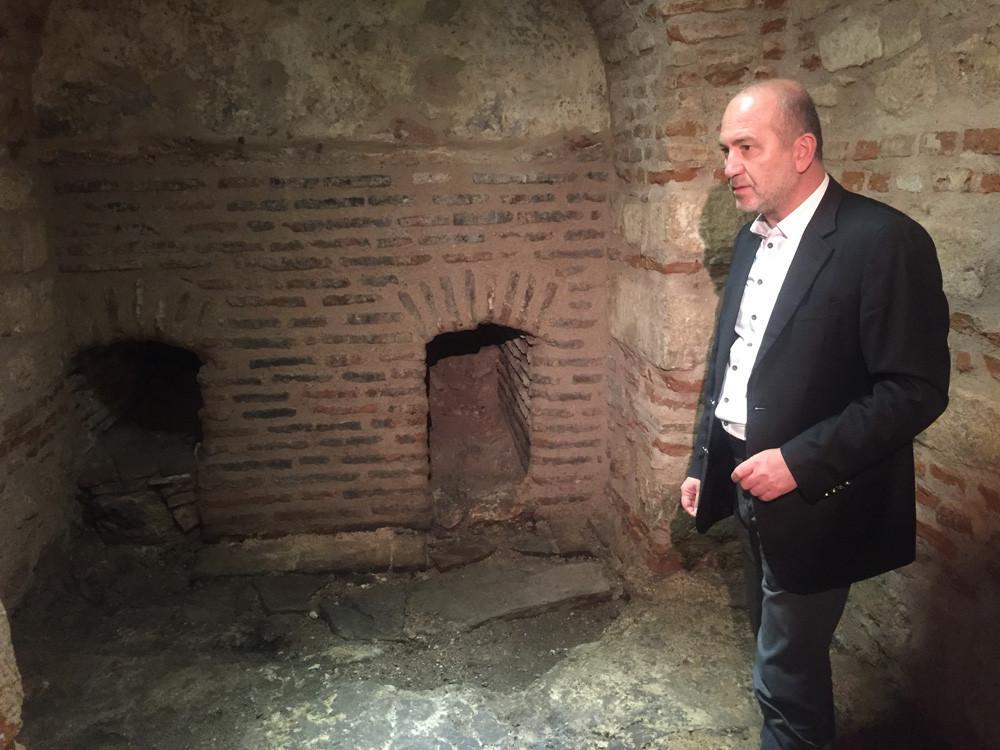
The most comprehensive restoration work has been carried out in Istanbul’s Topkapı Palace with a budget of 300 million Turkish liras.
Previously, a Turkish bath (hamam) used by five Turkish sultans had been uncovered. The bath, which had only been mentioned in written documents before, had come to light by chance during the restoration of the Seferli Koğuşu (Dormitory of the Expeditionary Force).
After discovering the bath, experts started searching for the other structures in the bath and have recently unearthed a historic fountain and furnace.
The ancient bath was built during the construction of Topkapı Palace in the 1460s. It is thought to have been used for a total of 120 years by Ottoman sultans Mehmed the Conqueror, Bayezid II, Selim I, Suleiman the Magnificent and Selim II until the construction of the Baths of the Sultan known as “Hünkar Hamamı” in the 1580s by the court architect, Mimar Sinan.
The relics were initially thought to have belonged to the Roman period, but once the excavations expanded, art experts deduced it was the first bath built in the palace, as referred to in written historical documents.
During the restoration carried out on the ground to reinforce the statistical structure of the Dormitory of the Expeditionary Force, a stepped section was discovered below the ground. When the stone covers were lifted, a brand new area came to light. It was discovered that this new space was the furnace of the bath. This section, which is still the same since it had first been built, will be cleaned and opened to visitors.
First thought to be a hidden tunnel
Another discovery was uncovered during the work to restore the ceiling and walls of the Seferli Koğuşu, which had been covered with concrete plaster. Experts discovered big cracks on the walls that had resulted from earthquakes over the years and additional concrete parts that had been an extra burden on the structure.
Experts also realized that the ground should be reinforced in the Sarayburnu part of the palace. When the plaster on the walls were lifted, they found a hole in the palace’s western wall and a structure. Inside the hole, they found a structure, which was first thought to be a hidden tunnel.
After cleaning the 10-meter-deep, 2.5-meter-wide structure, experts saw it was a fountain, which had served as a water tank.
Sultan’s dresses to be displayed
The head of Topkapı Palace Museum Professor Mustafa Küçükaşçı spoke about the new discoveries.
“What is special about the Seferli Koğuşu is it carries the characteristics of different periods. Before his expeditions, Ottoman Sultan Murat IV would bring the officials here to the army. This is why the name of this place is the Dormitory of the Expeditionary Force. Previously, this had been where the sultan’s clothing was cleaned,” he said.
“In the past years, too much concrete had been used during restorations of the building. Its walls and roof were reinforced concrete. We are trying to reveal its authentic state with the restoration. When removing the concrete from the walls, we found the fountain and the water tank behind it. It is estimated that the structure was built at the end of the 18th century. As for the furnace, it served to heat the bath,” said Küçükaşçı.
“We have gone back to the earliest period. The sultan’s dresses will be displayed in the Seferli Koğuşu. Our priority is to reveal the real history and architectural features of the structure. We will examine the archive documents and inform the restoration team. We are contributing to architectural and restoration history,” said the museum’s head.